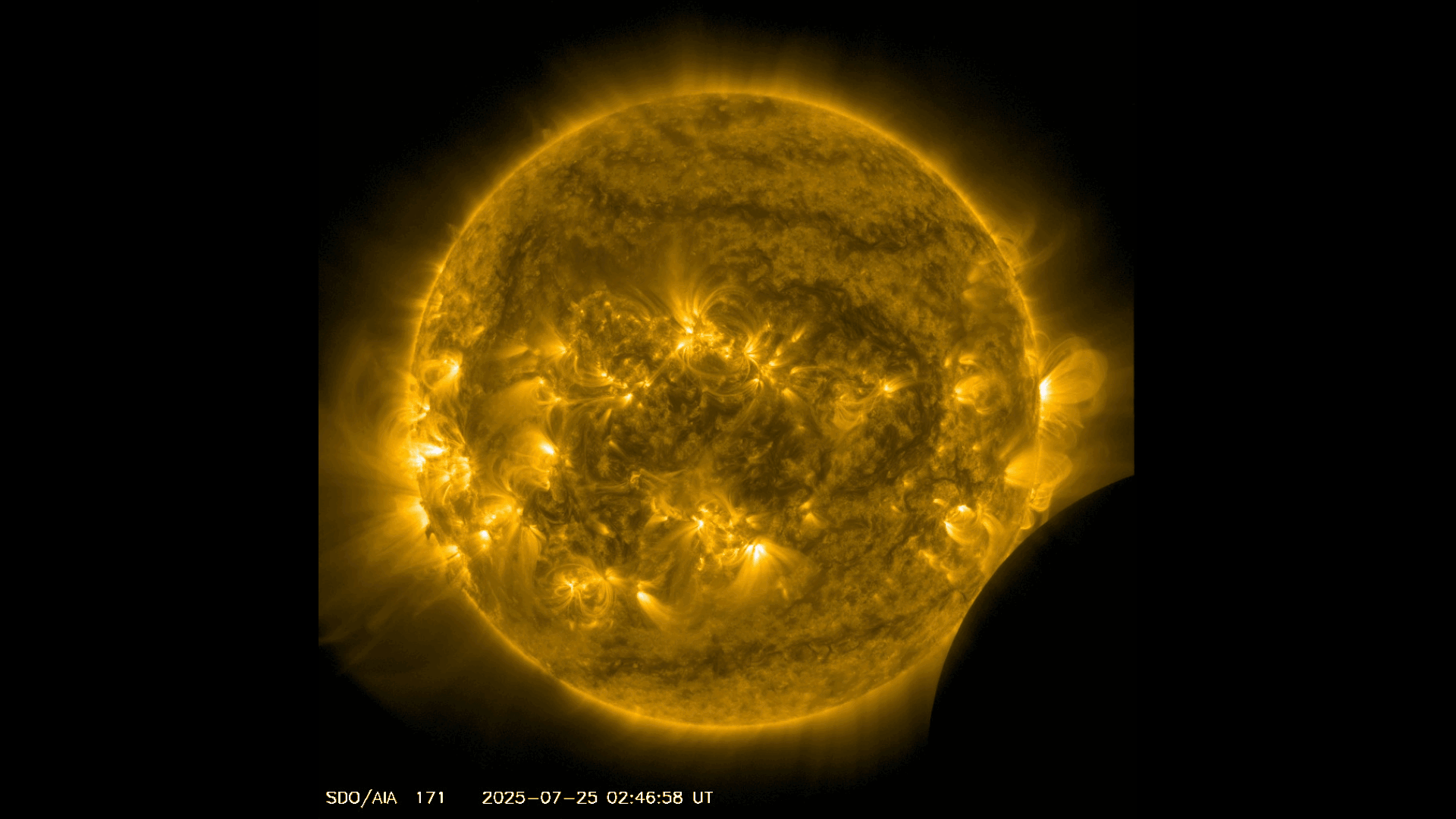
NASA spacecraft snaps images of lunar transit and Earth eclipse on the same day
How did your country report this? Share your view in the comments.
Diverging Reports Breakdown
NASA spacecraft snaps images of lunar transit and Earth eclipse on the same day — see the photos
NASA’s Solar Dynamics Observatory is in a geosynchronous orbit around Earth. At different times, both the moon and Earth passed between SDO and the sun. The July 25 lunar transit was SDO’s fourth partial eclipse since April. It was also the deepest, covering up to 62% of the sun’s disk and lasting about 50 minutes.. The next total solar eclipse — which will be visible from parts of Greenland, Iceland, Russia, Spain and Portugal — will occur on Aug. 12, 2026. The spacecraft launched in February 2010 and has been observing the sun almost continuously since May of that year. It is in the midst of its 31st eclipse season, which began July 10 and will last until Aug. 7.
An Earth-orbiting spacecraft just experienced an unusual phenomenon: a lunar transit and an Earth eclipse on the same day.
On July 25, at different times, both the moon and Earth passed between NASA’s Solar Dynamics Observatory (SDO) and the sun.
SDO studies the sun ‘s activity, including the solar wind (the stream of charged particles flowing from the sun), solar flares and changes in the sun’s magnetic field. These data help scientists forecast solar activity that can affect Earth. The spacecraft launched in February 2010 and has been observing the sun almost continuously since May of that year.
To keep a constant eye on the sun, SDO is in a geosynchronous orbit around Earth , meaning it circles the planet once every day. The plane of its orbit is angled relative to Earth’s rotational axis, which keeps the planet out of the way of its observations. This means the spacecraft usually has a view of the sun.
But occasionally, the moon blocks that view. Several times per year, the moon partially eclipses the sun from SDO’s perspective. The July 25 lunar transit, which began around 2:45 UTC, was SDO’s fourth partial eclipse since April, according to SDO’s blog . It was also the deepest, covering up to 62% of the sun’s disk and lasting about 50 minutes.
Earth also occasionally passes between SDO and the sun. SDO’s orbit is designed to minimize these interruptions to the craft’s regular observations, but roughly twice per year, Earth blocks out the sun for a short period each day. Each of these “eclipse seasons” lasts around three weeks, according to NASA . SDO is in the midst of its 31st eclipse season , which began July 10 and will last until Aug. 7.
Beginning around 6:30 UTC, about three hours after the moon finished its transit, Earth completely blocked SDO’s view of the sun. The total eclipse ended shortly before 8:00 UTC, according to the Solar Dynamics Observatory blog .
Sign up for the Live Science daily newsletter now Get the world’s most fascinating discoveries delivered straight to your inbox. Contact me with news and offers from other Future brands Receive email from us on behalf of our trusted partners or sponsors
The two events look a bit different in SDO’s images of the sun. Because Earth’s atmosphere absorbs some sunlight, its shadow has a fuzzy edge. Meanwhile, the moon, which has no atmosphere, carves a crisp circle out of the sun’s disk.
This isn’t the first time both Earth and the moon have gotten in SDO’s way on the same day. In 2015 — and again in 2016 — both bodies eclipsed the sun from SDO’s perspective at the same time, resulting in a ” double eclipse .”
Earth-bound eclipse spotters will have to wait a few more weeks to catch the next event. A partial solar eclipse will be visible from New Zealand and parts of Australia on Sept. 21. The next total solar eclipse — which will be visible from parts of Greenland, Iceland, Russia, Spain and Portugal — will occur on Aug. 12, 2026 .
Sun quiz: How well do you know our home star?
